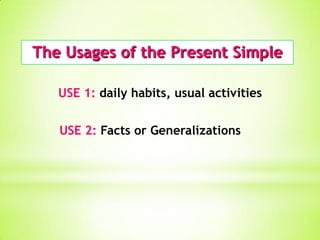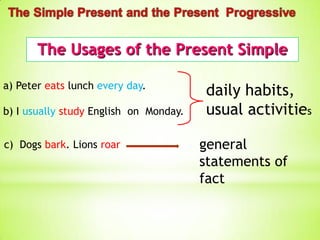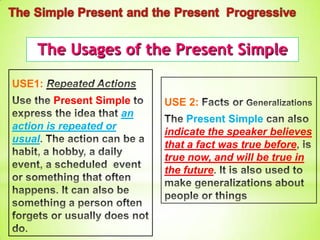The document discusses the usages of the present simple and present progressive tenses in English. [1] It outlines how the present simple is used to describe daily habits, usual activities, facts or generalizations. [2] It also explains how the present progressive is used to describe actions that are happening now or at the time of speaking. [3] Examples are provided to illustrate the formation and uses of both tenses.



























